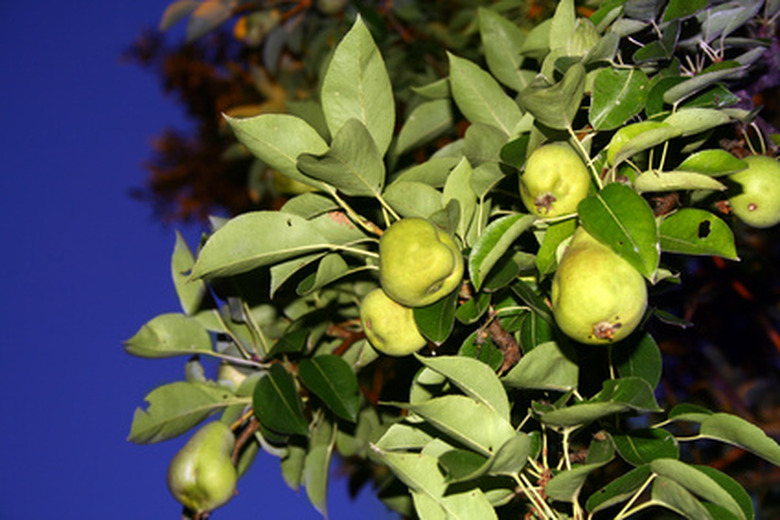Diseases Of Bradford Pear Trees
The Bradford pear tree is an ornamental variety that is often used for landscaping. While beautiful, Bradford pear trees suffer from a host of problems. Because their quick-growing branches are made of weak wood and grow at narrow angles, they often break with age or under adverse weather conditions. When under this type of stress, Bradford pear trees are more susceptible to disease.
Leaf Scorch
Leaf scorch typically affects Bradford pear trees in summer after a period of drought or high temperatures (it can also be caused by salty soil). Newly-planted and injured trees are the most susceptible to the disease whose symptoms are caused by the tree's inability to supply adequate amounts of water to its peripheral tissues. The leaves of afflicted Bradford pear trees appear "scorched" or brown at their edges. As the disease progresses, the scorching travels to the interior of the leaves and dries them out eventually causing them to drop. This disease will clear up on its own once the weather cools or the soil is desalinated.
- The Bradford pear tree is an ornamental variety that is often used for landscaping.
- Leaf scorch typically affects Bradford pear trees in summer after a period of drought or high temperatures (it can also be caused by salty soil).
Fire blight
Bradford pear trees are quite susceptible to fire blight, a quick-spreading bacterial disease. The disease typically attacks in spring after periods of wet weather. Once the infection sets in, Bradford pear tree leaves, buds or even fruit will turn black and drop. As the infection spreads, it moves to the branches, which may ooze a sticky milky liquid when it rains. There is no cure for this fatal disease. To control the spread of disease, affected trees are uprooted and replaced with disease-resistant varieties.
Leaf Spot Disease
In Bradford pear trees, the fungus entomosporium causes leaf spot disease in the fall or spring during or shortly after exceptionally rainy weather. The initial infection causes purple red spots on the leaves. And, as the disease progresses, the spots grow and the leaves turns red and eventually drop. Leaf spot disease can be controlled by pruning affected leaves during the growing season. To protect next season's leaves, spray a fungicide such as mancozeb at 1-week intervals from bud break to the end of the growing season.
- Bradford pear trees are quite susceptible to fire blight, a quick-spreading bacterial disease.
- As the infection spreads, it moves to the branches, which may ooze a sticky milky liquid when it rains.
